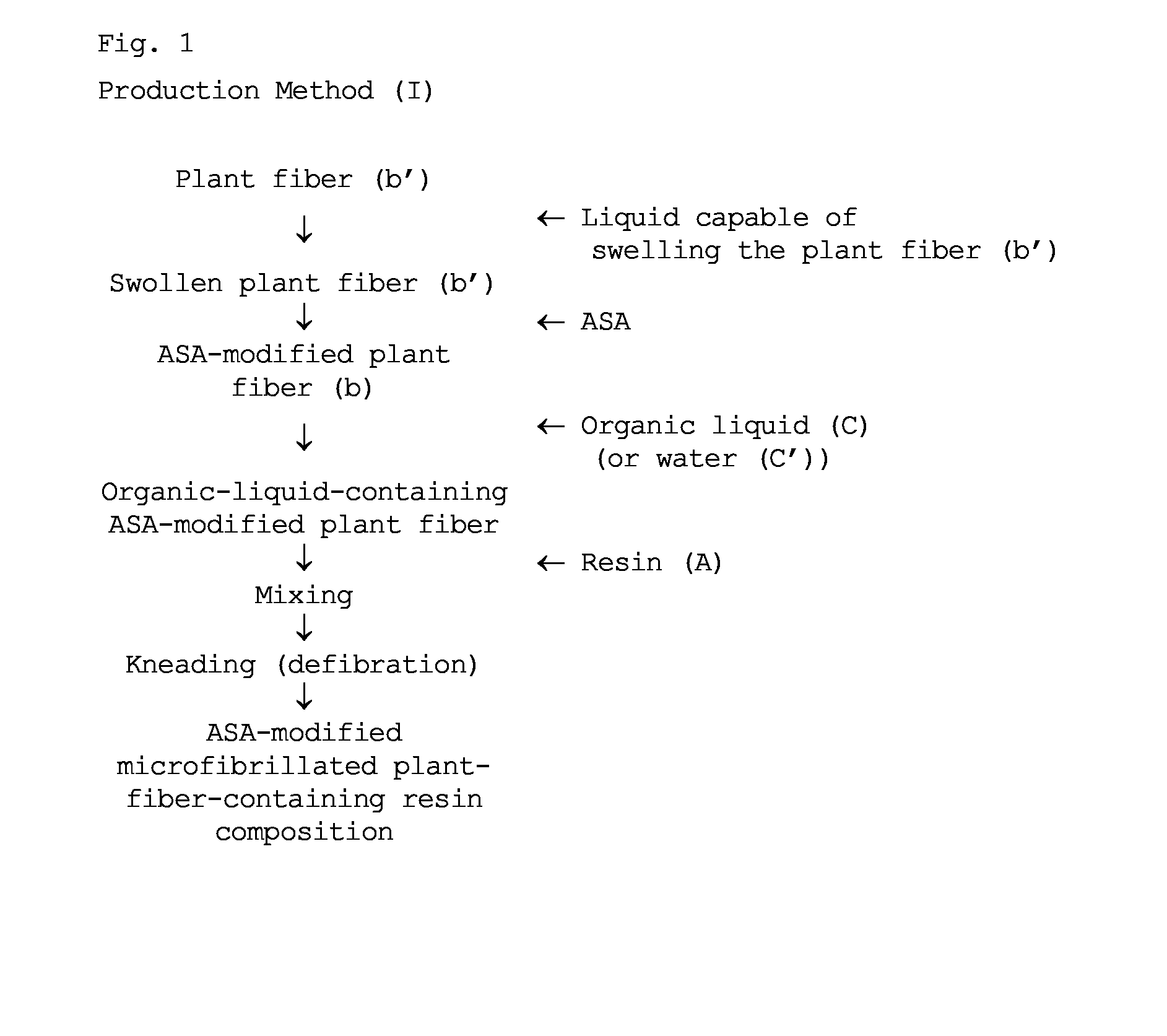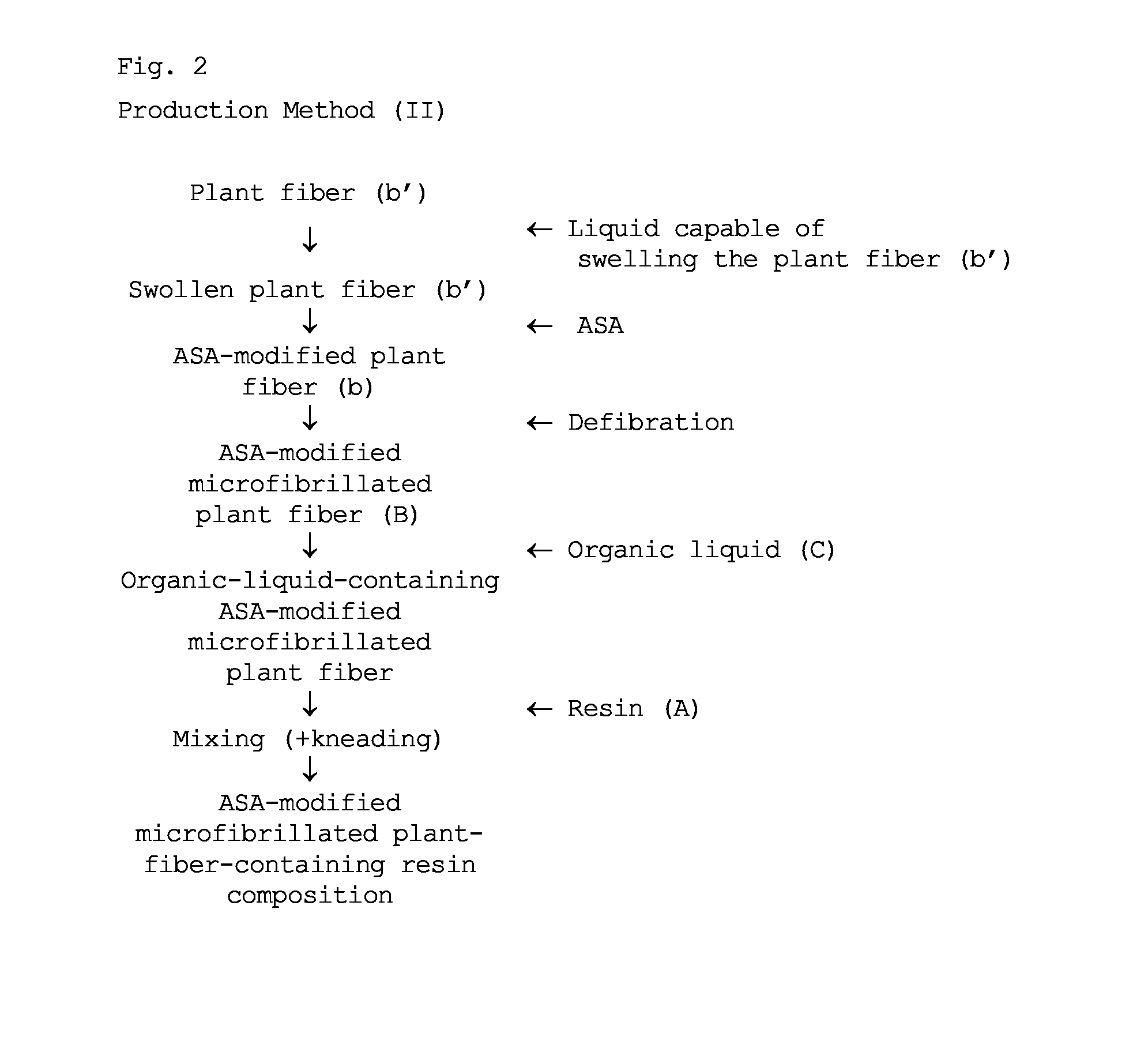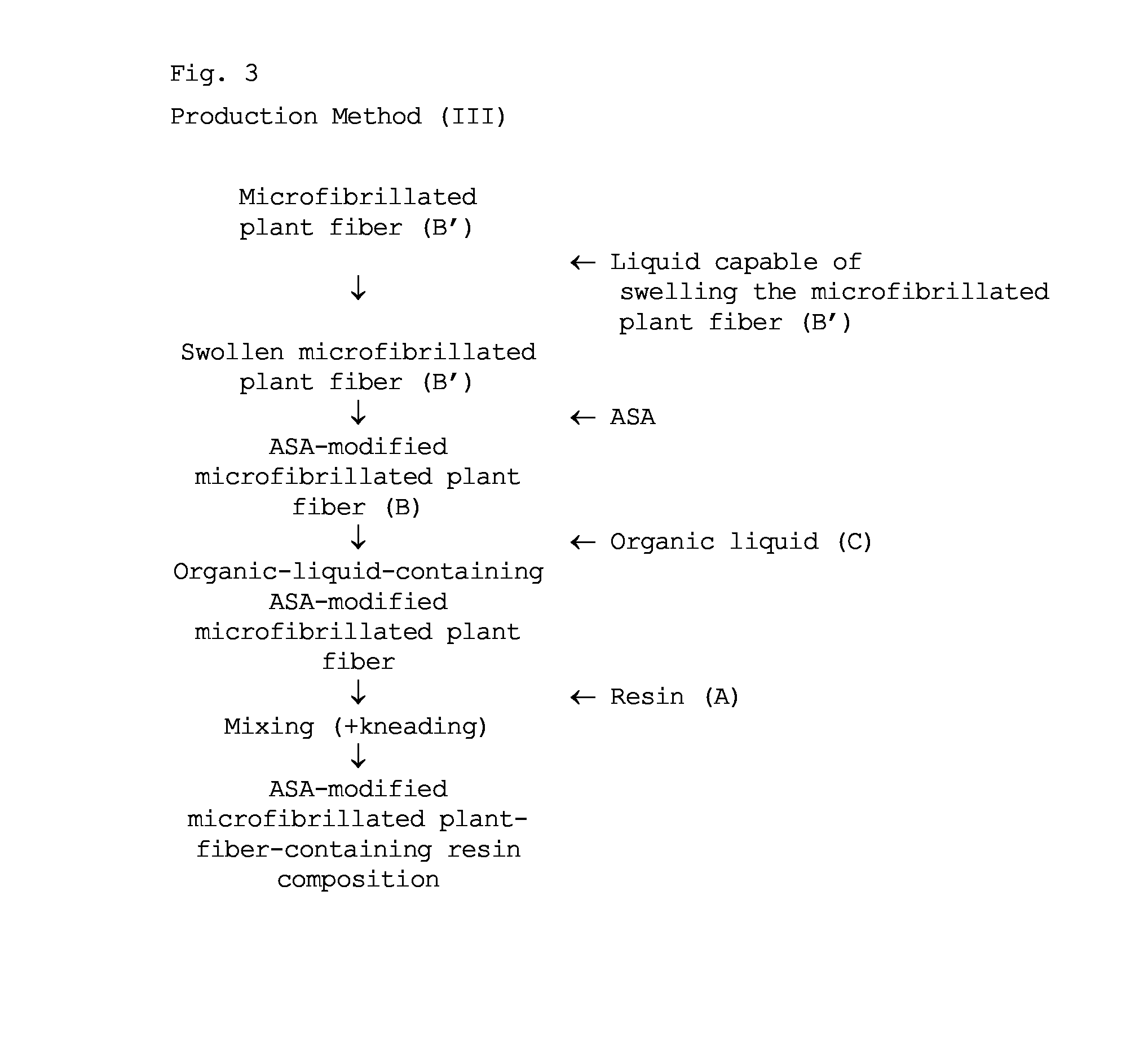Method for producing resin composition comprising modified microfibrillated plant fibers, and same resin composition
a technology of microfibrillation and resin composition, which is applied in the direction of dental care, textiles and papermaking, medical preparations, etc., can solve the problems of poor compatibility, insufficient mechanical properties of composite materials, and poor mechanical properties of composite materials, and achieve excellent mechanical properties, simple steps, and high strength
- Summary
- Abstract
- Description
- Claims
- Application Information
AI Technical Summary
Benefits of technology
Problems solved by technology
Method used
Image
Examples
example 1
Preparation of Refiner-Treated Plant Fiber
[0151]A slurry of needle bleached kraft pulp (NBKP)(slurry concentration: 2% by mass) was passed through a single-disk refiner (produced by Kumagai Riki Kogyo Co., Ltd.) and repeatedly subjected to refiner treatment until the Canadian standard freeness (CSF) value of 100 mL or less was achieved. The obtained slurry was concentrated using a centrifuge (produced by Kokusan Co., Ltd.) to a pulp concentration of 20% by mass, thus preparing (refiner-treated) NBKP.
Preparation of Alkenyl Succinic Anhydride (ASA)-Modified Plant Fiber
[0152]8,000 g of N-methylpyrrolidone (NMP) was added to 10,000 g (solids content: 2,000 g) of the (refiner-treated) hydrous NBKP. After the mixture was placed in a triple-blade stirring mixer (Trimix TX-50, produced by Inoue Manufacturing Inc.), stirring was started and the mixture was dehydrated under reduced pressure at 40 to 50° C. Subsequently, 1,998 g of T-NS135 (ASA having 16 carbon atoms, except for the number of ...
example 2
[0170]In the preparation of ASA-modified plant fiber in Example 1, after the reaction of NBKP with ASA, the reaction mixture was washed successively with acetone, ethanol, acetic acid water, and water to obtain a hydrous ASA-modified NBKP. The obtained ASA-modified NBKP had a degree of substitution of 0.34.
[0171]The hydrous ASA-modified NBKP (solids concentration: 20 mass %), MAPP (trade name Toyotac PMA H1000P, produced by Toyobo Co., Ltd.), and a high-density polyethylene resin (HDPE, trade name Flo-Beads HE3040, produced by Sumitomo Seika Chemicals Co., Ltd.) were stirred using a mixer for 1 minute.
[0172]Based on solids, the proportions of components in the mixture are as follows.
[0173]ASA-modified microfibrillated plant fiber: 50.3 mass % (microfibrillated plant fiber-derived portion (30 mass %)+ASA-derived portion (20.3 mass %));
[0174]resin: 45.7 mass % (MAPP: (12.9 mass %)+HDPE (32.8 mass %); and
[0175]calcium carbonate: 4 wt. %.
[0176]The obtained resin composition was dried un...
example 3
Preparation of Microfibrillated Plant Fiber
[0191]A slurry of needle bleached kraft pulp (NBKP) (slurry concentration: 2 mass %) was passed through a single-disk refiner (produced by Kumagai Riki Kogyo Co., Ltd.) and repeatedly subjected to refiner treatment until a Canadian standard freeness (CSF) value of 100 mL or less was achieved. The obtained slurry was concentrated using a centrifuge (produced by Kokusan Co., Ltd.) to a concentration of 20 mass %, thus preparing (refiner-treated) NBKP.
[0192]Subsequently, water was added to 375 g of the (refiner-treated) NBKP (concentration: 20 mass %) to make a total amount of 10 kg (slurry concentration: 0.75 mass %). The obtained refiner-treated NBKP slurry was subjected to mechanical defibration treatment using a bead mill (NVM-2, produced by Aimex Co., Ltd.) under the following conditions.
Defibration Conditions
[0193]Beads: zirconia beads (diameter: 1 mm)
Vessel capacity: 2 liters
Amount of beads filled: 1,216 ml (4,612 g)
Rotating speed: 2,00...
PUM
| Property | Measurement | Unit |
|---|---|---|
| Percent by mass | aaaaa | aaaaa |
| Mass | aaaaa | aaaaa |
| Length | aaaaa | aaaaa |
Abstract
Description
Claims
Application Information
 Login to View More
Login to View More - R&D
- Intellectual Property
- Life Sciences
- Materials
- Tech Scout
- Unparalleled Data Quality
- Higher Quality Content
- 60% Fewer Hallucinations
Browse by: Latest US Patents, China's latest patents, Technical Efficacy Thesaurus, Application Domain, Technology Topic, Popular Technical Reports.
© 2025 PatSnap. All rights reserved.Legal|Privacy policy|Modern Slavery Act Transparency Statement|Sitemap|About US| Contact US: help@patsnap.com



